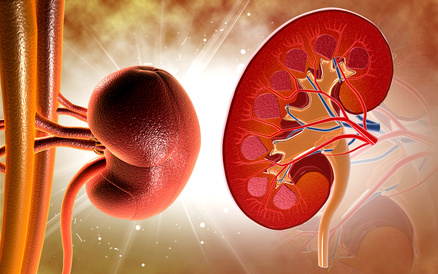The title of this article leads us to think that we will find a list of things that we can do to reduce kidney injury. However, (unfortunately) sodium bicarbonate showed no benefit over saline and n-acetylcysteine showed no benefit over a placebo for the reduction of kidney damage after coronary angioplasty.
 Among the protective measures most frequently tested are endovenous sodium bicarbonate and oral n-acetylcysteine, both with conflicting results.
Among the protective measures most frequently tested are endovenous sodium bicarbonate and oral n-acetylcysteine, both with conflicting results.
The PRESERVE (Prevention of Serious Adverse Events Following Angiography) trial used a 2 × 2 factorial design and randomized 5177 patients with stage III or IV renal insufficiency requiring angiography to 1.26% sodium bicarbonate or 0.9% sodium chloride and n-acetylcysteine or placebo for 5 days. The primary endpoint was a composite of death, need for dialysis, or persistent renal insufficiency at 90 days. Contrast-associated acute kidney injury was a secondary endpoint.
Read also: Contrast Induced Kidney Injury, Infamous Problem with No Magical Solutions.
A total of 1161 study patients underwent coronary angioplasty. The mean glomerular filtration rate was 50.7 mL/min/1.73 m2 and 82% of the population had a history of diabetes.
The primary endpoint occurred in 2.6% of patients who received sodium bicarbonate vs. 4% of patients who received saline (p = 0.41) and in 3.8% of patients who received n-acetylcysteine vs. 2.8% of patients who received a placebo (p = 0.29). There were no significant differences among groups as regards the incidence of contrast-associated kidney injury.
Conclusion
Among patients with chronic kidney disease who underwent angioplasty, there was no benefit of sodium bicarbonate over regular saline or of n-acetylcysteine over placebo for the prevention of contrast-associated kidney injury.
Original title: Strategies to Reduce Acute Kidney Injury and Improve Clinical Outcomes Following Percutaneous Coronary Intervention. A Subgroup Analysis of the PRESERVE Trial.
Reference: Santiago Garcia et al. J Am Coll Cardiol Intv 2018;11:2254-61.
Get the latest scientific articles on interventional cardiologySubscribe to our weekly newsletter
We are interested in your opinion. Please, leave your comments, thoughts, questions, etc., below. They will be most welcome.





